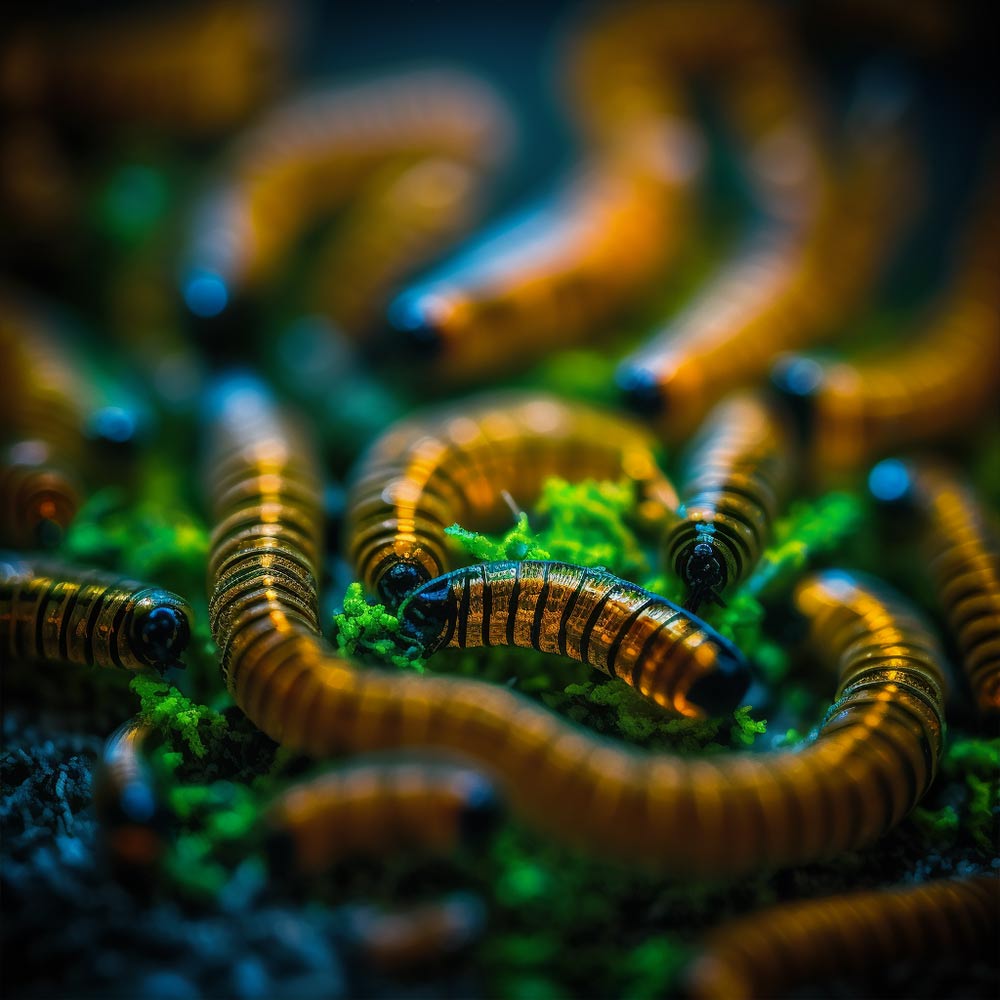Your basket is currently empty!
As concerns about climate change and sustainability continue to grow, many people are looking for ways to reduce their carbon footprint and make more environmentally-friendly choices. One area where this is particularly important is in the food we eat. Traditional livestock farming has a significant impact on the environment, from the resources required to grow the feed to the emissions produced by the animals themselves. But what if there was a way to get protein that was both sustainable and nutritious? Enter the humble mealworm.
What Are Mealworms?

Mealworms are the larvae of darkling beetles. They are about an inch long and have a hard exoskeleton. In the wild, they feed on decaying plant matter and other insects. They are a popular food for many types of animals, including birds, reptiles, and fish.
Why Are Mealworms a Sustainable Protein Source?
Compared to traditional livestock farming, mealworms are an incredibly sustainable source of protein. Here are just a few reasons why:
- They require far less water than traditional livestock. According to the UN Food and Agriculture Organization, it takes around 1,800 gallons of water to produce one pound of beef. In contrast, it only takes around one gallon of water to produce one pound of mealworms.
- They produce far fewer greenhouse gas emissions than traditional livestock. According to a study by the University of Georgia, mealworms produce 1% of the greenhouse gas emissions of beef.
- They require far less land than traditional livestock. According to the same study, it takes 10 times less land to produce one pound of mealworms compared to one pound of beef.
How Are Mealworms Produced?

While mealworms are found in the wild, they can also be produced on a larger scale for human consumption. Here’s how it works:
- Mealworms are typically raised in large bins filled with bran or another type of substrate. They are kept in a warm, dark place and provided with food and water.
- Once they reach maturity, they are harvested by sifting them out of the substrate.
- The mealworms are then washed, dried, and packaged for sale.
How Can You Use Mealworms in Your Diet?
Mealworms are incredibly versatile and can be used in a variety of different dishes. Here are just a few ideas:
- Roasted: Roasted mealworms can be a crunchy, protein-packed snack. Simply toss them in a little bit of oil and roast them in the oven until crispy.
- Powdered: Mealworms can be ground into a powder and added to smoothies, baked goods, and other dishes for a protein boost.
- Fried: Fried mealworms can be a tasty addition to salads, stir-fries, and other dishes. Simply fry them in a little bit of oil until crispy.
The Benefits of Eating Mealworms

Aside from their sustainability benefits, mealworms are also incredibly nutritious. Here are just a few of the benefits of incorporating mealworms into your diet:
- They’re high in protein. Mealworms are a great source of protein, with around 20 grams of protein per 100 grams of mealworms.
- They’re low in fat. Unlike many other protein sources, mealworms are relatively low in fat.
- They’re rich in vitamins and minerals. Mealworms are a good source of vitamins B12 and B2, as well as iron, zinc, and magnesium.
Are Mealworms Safe to Eat?
If you’re new to the idea of eating insects, you might be wondering whether mealworms are safe to eat. The good news is that mealworms are perfectly safe for human consumption. In fact, they’ve been consumed by humans for thousands of years in various parts of the world.
However, if you have a shellfish or crustacean allergy, you may want to avoid mealworms, as they are closely related to these types of seafood. Additionally, it’s important to make sure that the mealworms you’re consuming are raised specifically for human consumption and have been processed and packaged safely.
Final Thoughts
Mealworms might not be the most appetizing-sounding food, but when you consider their sustainability benefits and nutritional value, they start to sound a lot more appealing. Whether you’re looking for a new source of protein, trying to reduce your carbon footprint, or just looking to try something new, mealworms are definitely worth considering. So why not give them a try and see what you think? Who knows, they might just become your new favorite snack.

UK Premium Dried Mealworms for Birds: High-Protein, Omega-Rich Food for Birds, Reptiles, and Chickens – Long Shelf Life
Get your hands on the best dried mealworms from UKGrow Shop! Our dried mealworms are a perfect, long-lasting food source for your pet birds, reptiles, and amphibians. They are high in protein and easy to store, making them an ideal choice for any pet owner. Shop now for fast and reliable FREE 48 hour delivery with same day dispatch up to 5pm!
You can read more Here.
I used the following sources for my information: https://www.newscientist.com/article/2354239-inside-an-insect-farm-are-mealworms-a-sustainable-meat-alternative/
https://solve.mit.edu/articles/mealworms-an-unexpected-way-to-nourish-communities-around-the-world

